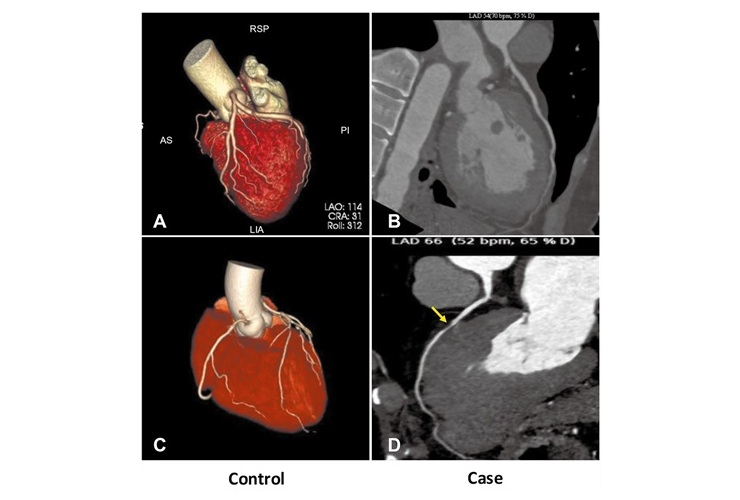100% of Future Surgeries Could Be Performed Using AR
|
By HospiMedica International staff writers Posted on 23 Jan 2023 |

Surgery using augmented reality (AR) is equally safe as traditional methods, although work still needs to be done to prove that it is as effective and as efficient, according to Dr. Timothy Witham, a professor of neurological surgery and orthopedic surgery at the Johns Hopkins University School of Medicine (Baltimore, MD, USA), who has performed the world’s first spinal surgery using AR with a head-mounted display. Dr. Witham is slated to join leading experts at Arab Health’s Future Health Summit on 2 February 2023 in Dubai where he will lead a discussion on the opportunities and benefits that alternate realities can offer to the healthcare industry, highlighting the available tools designed to make surgeries safer, more effective, faster and highly efficient.
“The definition of AR is when you take a computer-generated image and overlay that image on your view of the real world. Within AR, in contrast to virtual reality (VR), where you’re interacting with the virtual world, we're interacting with the real world, but we have additional computer-generated images that are being used concurrently to project digital information onto the existing surroundings,” said Dr. Witham.
“In 2020, we conducted the first augmented reality spinal surgery using a head-mounted display. This was achieved using an AR-enabled head device with the digital augmentation of a CT scan taken earlier. Ultimately, while we were operating and looking inside the patient, we had the CT scan right there in our field of vision,” he added. “Since then, I’ve performed over 150 surgeries using AR, and I can say it’s at least as good as robotics while also making huge inroads into minimizing the need for repeat surgeries due to misplaced spinal implants. It could also be the first step towards all surgeries being performed using AR”
“Thanks to new technology in the healthcare sector, preventive medicine will take on a new meaning. Blood analysis will become more advanced to the extent that it will outline your entire genetic makeup. Based on that, AI will make predictions on cancer risk or spine problems, for example. We will then be able to implement restorative or regenerative procedures to prevent the issue before it becomes an issue requiring treatment,” explained Dr. Witham.
Related Links:
Johns Hopkins University School of Medicine
Latest Surgical Techniques News
- Drug-Coated Balloons Can Replace Stents Even in Larger Coronary Arteries
- Magnetic Kidney Stone Retrieval Device Outperforms Ureteroscopic Laser Lithotripsy
- Absorbable Skull Device Could Replace Traditional Metal Implants Used After Brain Surgery
- Magic Silicone Liquid Powered Robots Perform MIS in Narrow Cavities
- 'Lab-on-a-Scalpel' Provides Real-Time Surgical Insights for POC Diagnostics in OR
- Biodegradable Brain Implant Prevents Glioblastoma Recurrence
- Tiny 3D Printer Reconstructs Tissues During Vocal Cord Surgery
- Minimally Invasive Procedure for Aortic Valve Disease Has Similar Outcomes as Surgery
- Safer Hip Implant Design Prevents Early Femoral Fractures
- New Nanomaterial Improves Laser Lithotripsy for Removing Kidney Stones
- Ultraflexible Neurovascular Microcatheter Delivers Therapies to Tiniest Blood Vessels

- Magnetic Soft Robotic Valve Provides Minimally Invasive Intervention for Acid Reflux
- Wireless Metamaterial Spinal Implants Can Feel, Heal and Communicate
- Major Study Examines Endoscopies that Fail to Detect Esophageal Cancer
- Robotic Assistant Delivers Ultra-Precision Injections with Rapid Setup Times
- Minimally Invasive Endoscopic Surgery Improves Severe Stroke Outcomes
Channels
Critical Care
view channel
Sweat-Powered Sticker Turns Drinking Cup into Health Sensor
Micronutrient deficiencies affect millions worldwide, yet checking vitamin C levels still requires blood draws, lab equipment, and high costs that prevent regular monitoring. Most people only get annual... Read more
Coronary Artery Stenosis Could Protect Patients from Pulmonary Embolism Effects
Acute pulmonary embolism (PE) occurs when blood clots block vessels carrying deoxygenated blood from the heart to the lungs, triggering a sudden rise in pressure against the right ventricle and risking... Read morePatient Care
view channel
Revolutionary Automatic IV-Line Flushing Device to Enhance Infusion Care
More than 80% of in-hospital patients receive intravenous (IV) therapy. Every dose of IV medicine delivered in a small volume (<250 mL) infusion bag should be followed by subsequent flushing to ensure... Read more
VR Training Tool Combats Contamination of Portable Medical Equipment
Healthcare-associated infections (HAIs) impact one in every 31 patients, cause nearly 100,000 deaths each year, and cost USD 28.4 billion in direct medical expenses. Notably, up to 75% of these infections... Read more
Portable Biosensor Platform to Reduce Hospital-Acquired Infections
Approximately 4 million patients in the European Union acquire healthcare-associated infections (HAIs) or nosocomial infections each year, with around 37,000 deaths directly resulting from these infections,... Read moreFirst-Of-Its-Kind Portable Germicidal Light Technology Disinfects High-Touch Clinical Surfaces in Seconds
Reducing healthcare-acquired infections (HAIs) remains a pressing issue within global healthcare systems. In the United States alone, 1.7 million patients contract HAIs annually, leading to approximately... Read moreHealth IT
view channel
Printable Molecule-Selective Nanoparticles Enable Mass Production of Wearable Biosensors
The future of medicine is likely to focus on the personalization of healthcare—understanding exactly what an individual requires and delivering the appropriate combination of nutrients, metabolites, and... Read moreBusiness
view channel
Philips and Masimo Partner to Advance Patient Monitoring Measurement Technologies
Royal Philips (Amsterdam, Netherlands) and Masimo (Irvine, California, USA) have renewed their multi-year strategic collaboration, combining Philips’ expertise in patient monitoring with Masimo’s noninvasive... Read more
B. Braun Acquires Digital Microsurgery Company True Digital Surgery
The high-end microsurgery market in neurosurgery, spine, and ENT is undergoing a significant transformation. Traditional analog microscopes are giving way to digital exoscopes, which provide improved visualization,... Read more
CMEF 2025 to Promote Holistic and High-Quality Development of Medical and Health Industry
The 92nd China International Medical Equipment Fair (CMEF 2025) Autumn Exhibition is scheduled to be held from September 26 to 29 at the China Import and Export Fair Complex (Canton Fair Complex) in Guangzhou.... Read more














